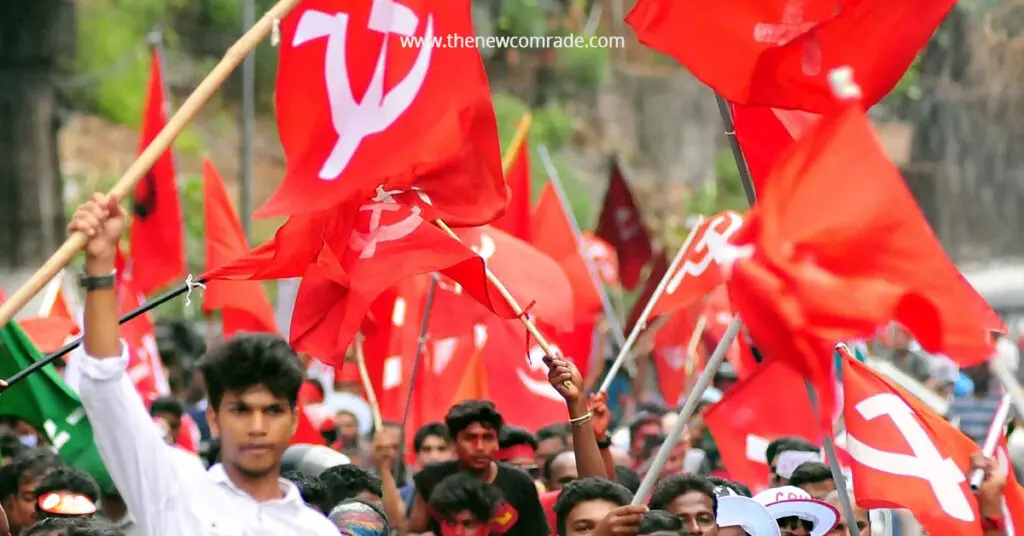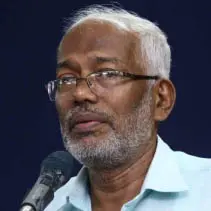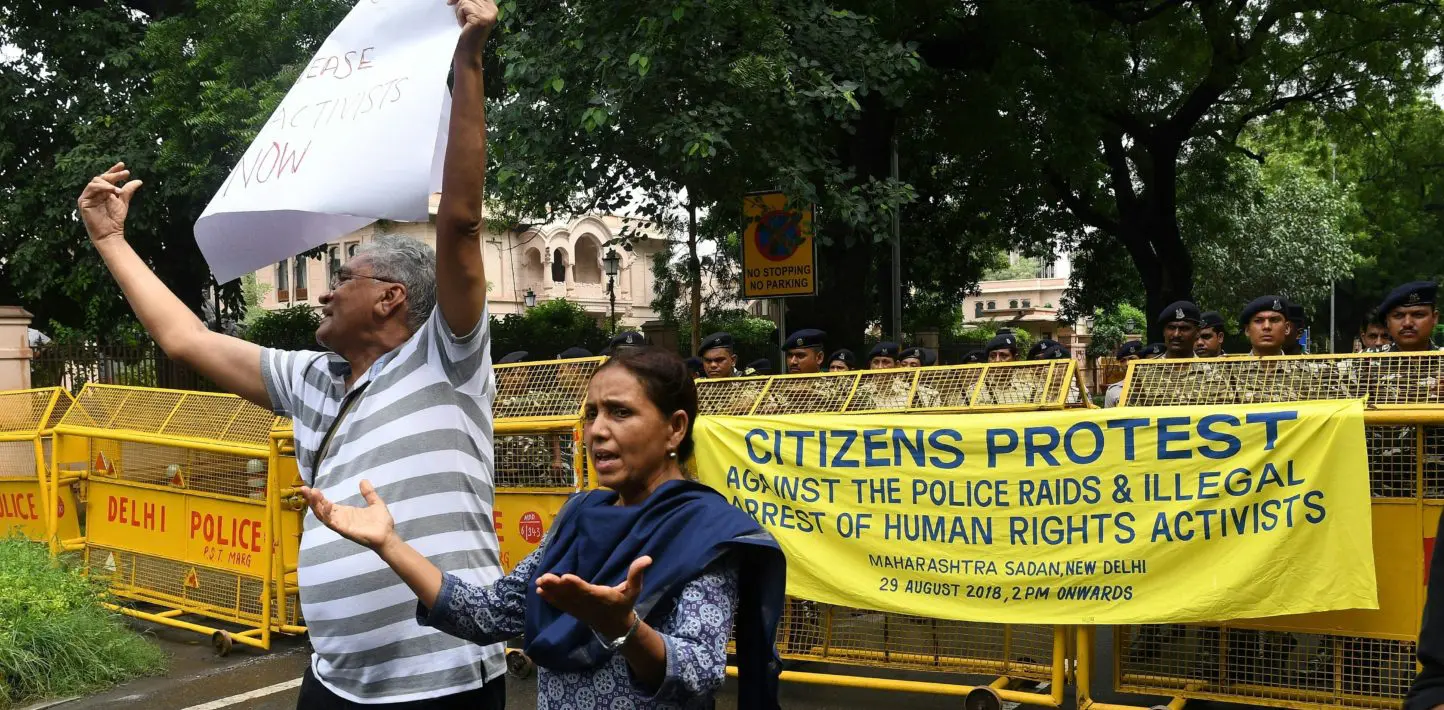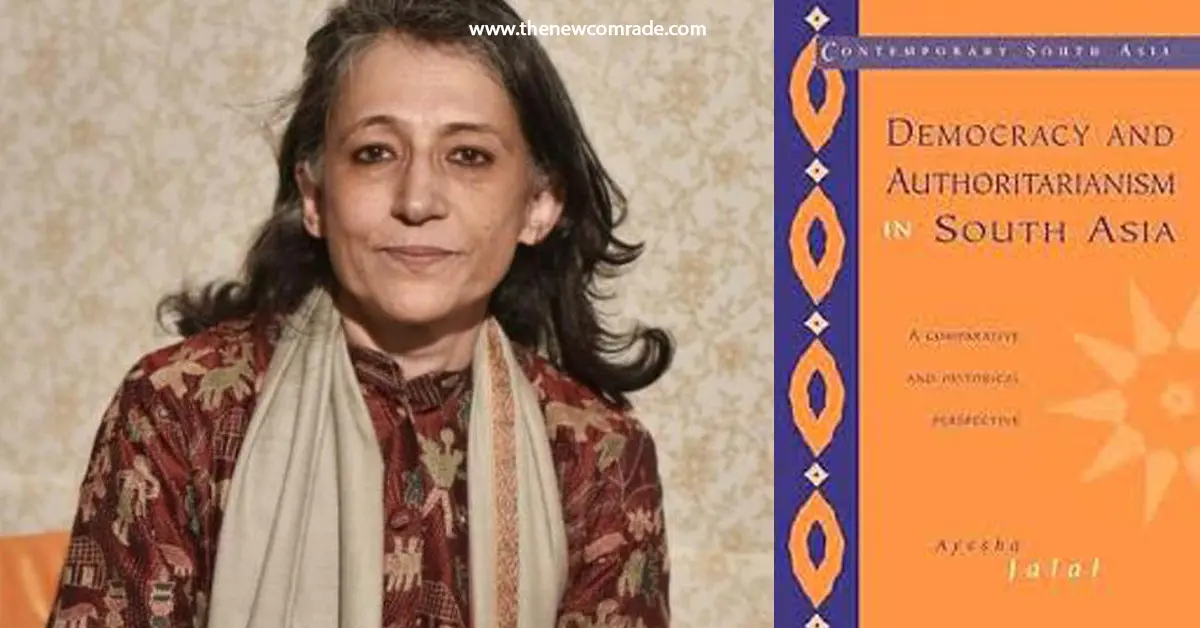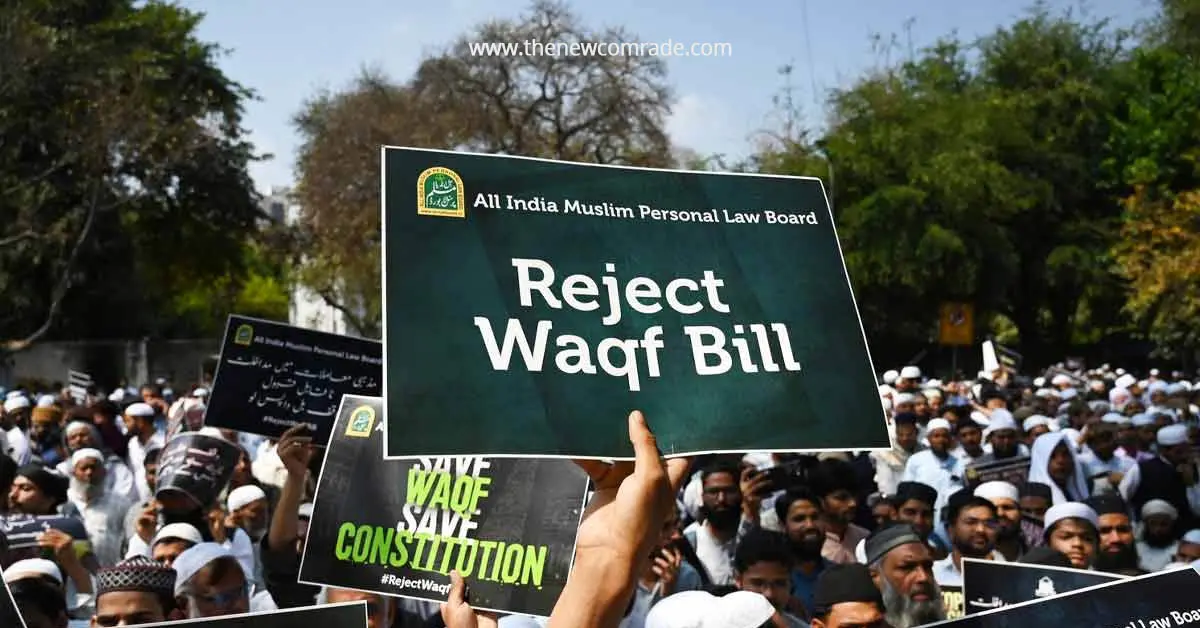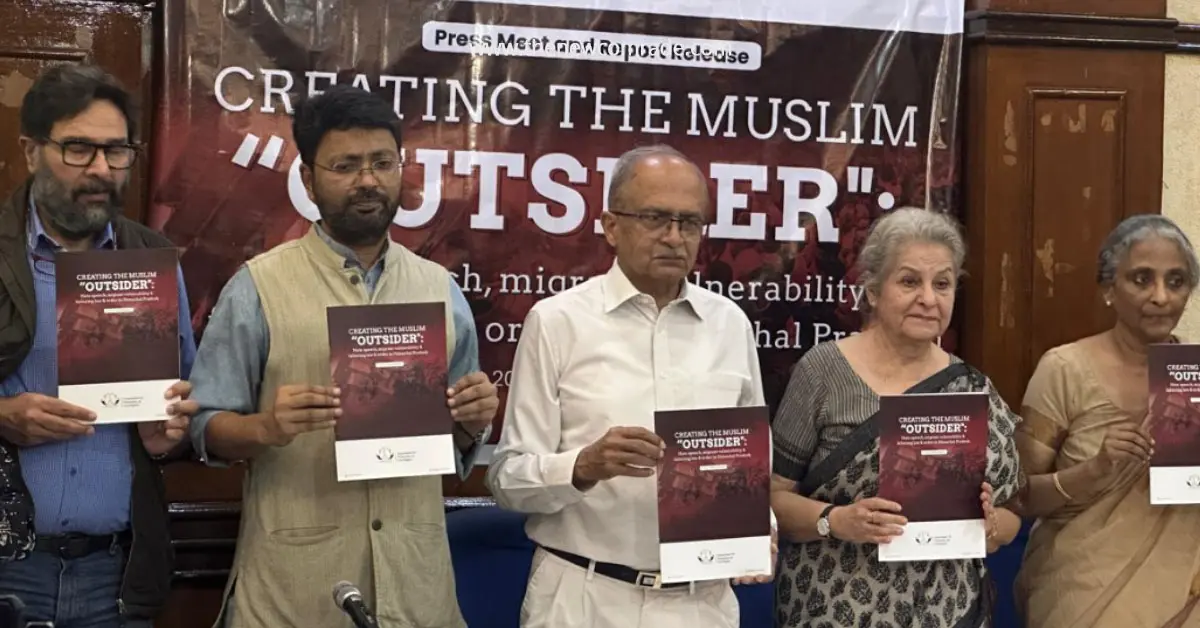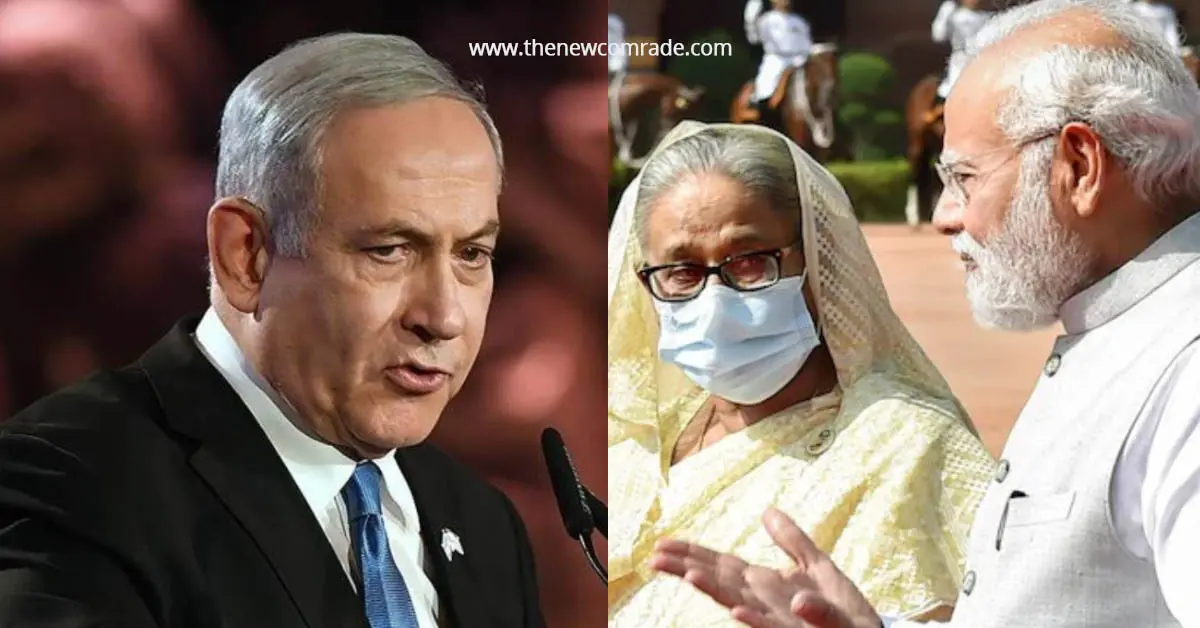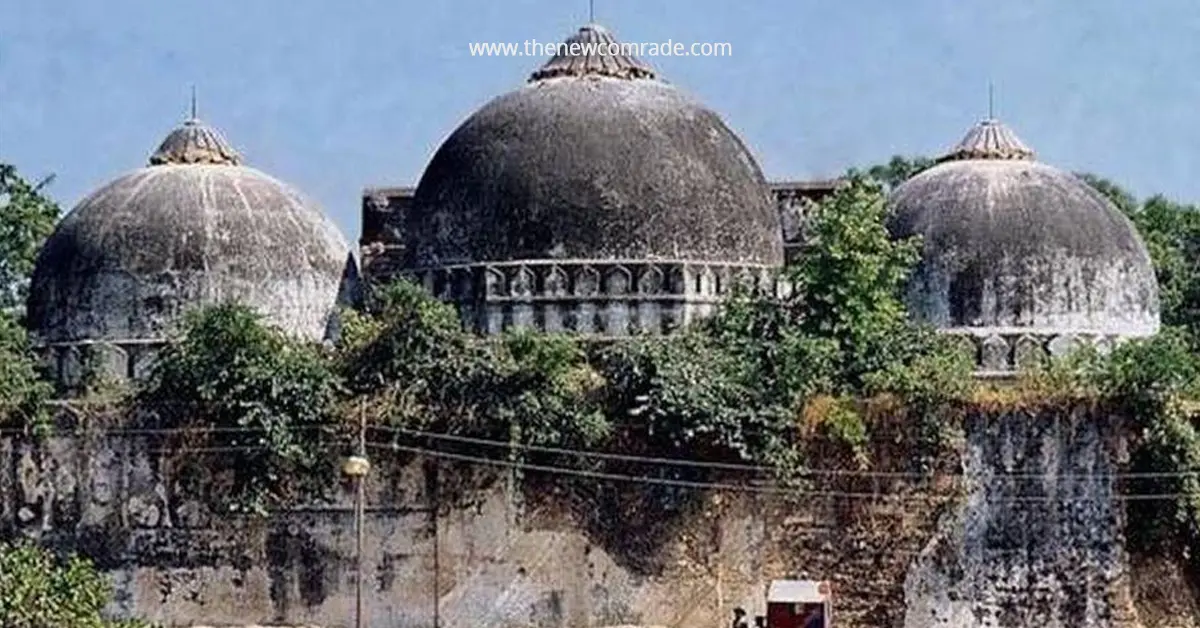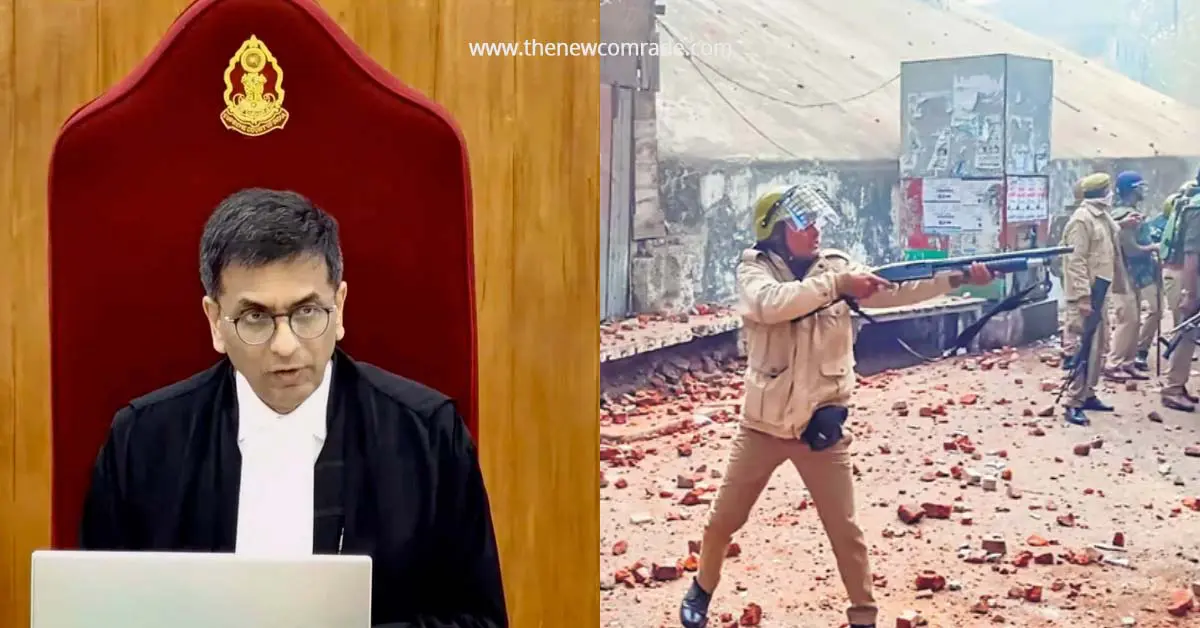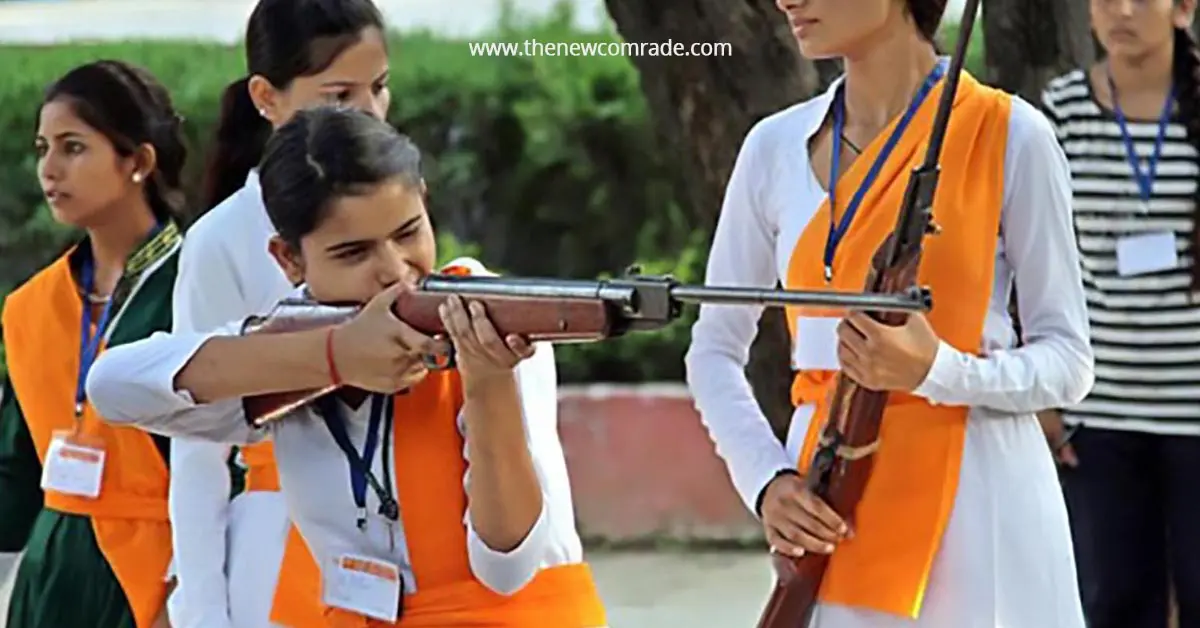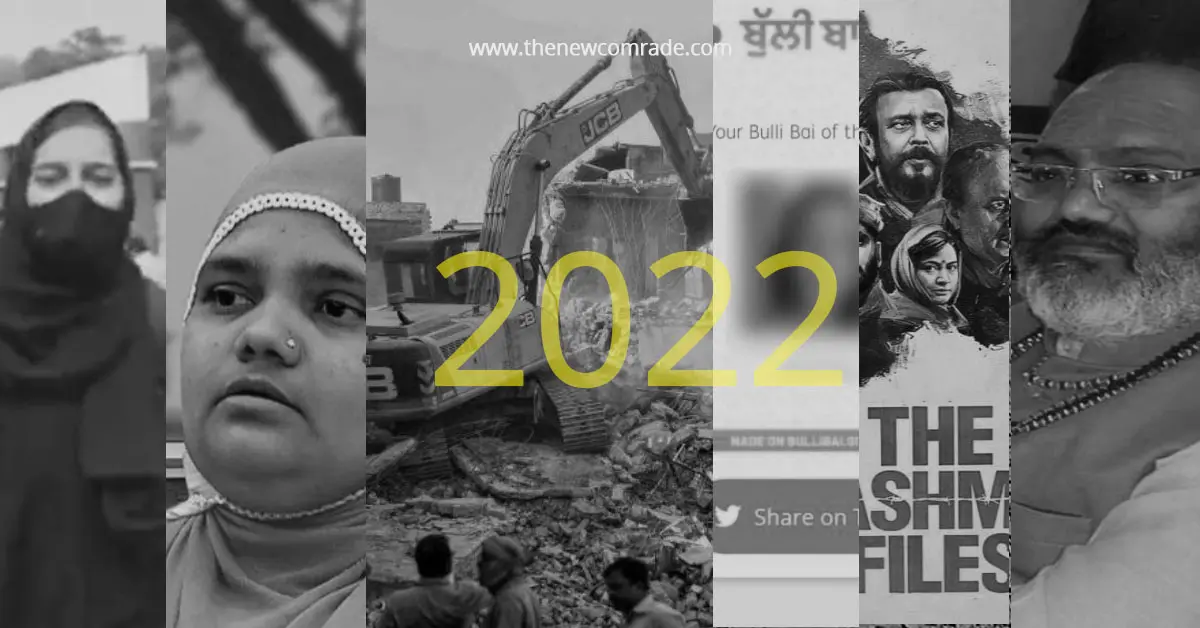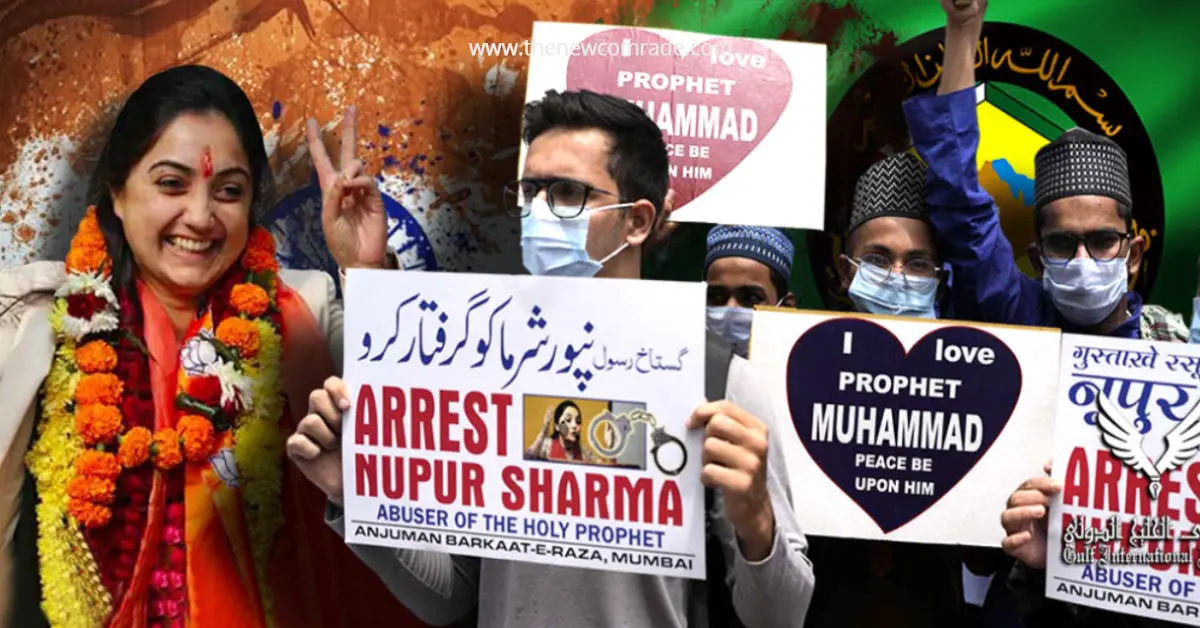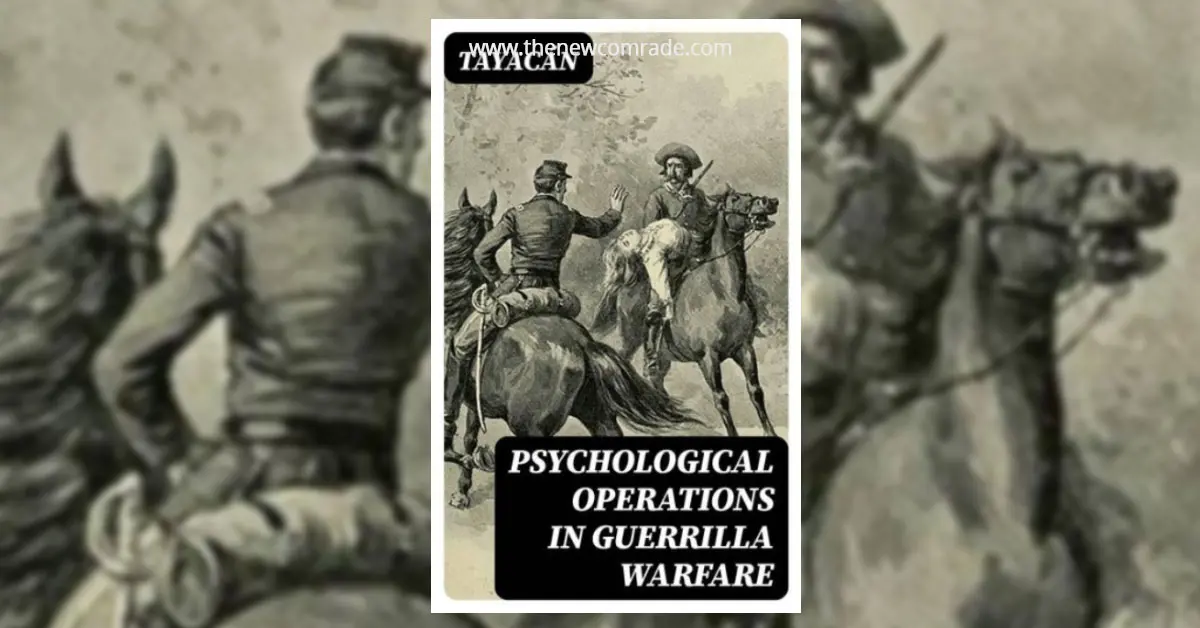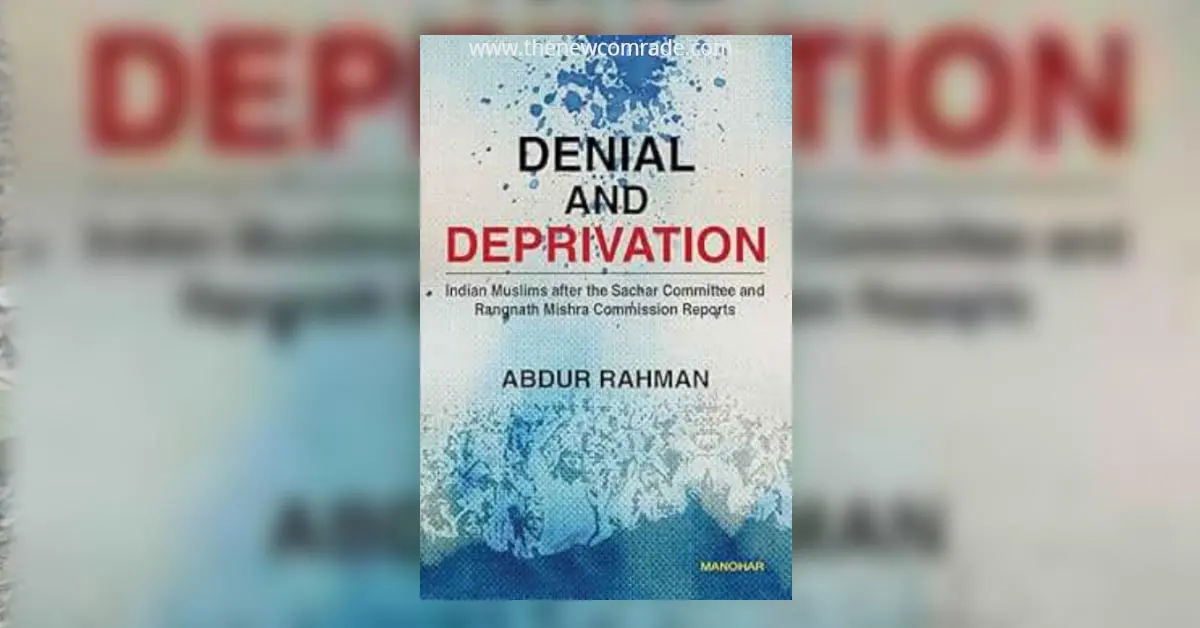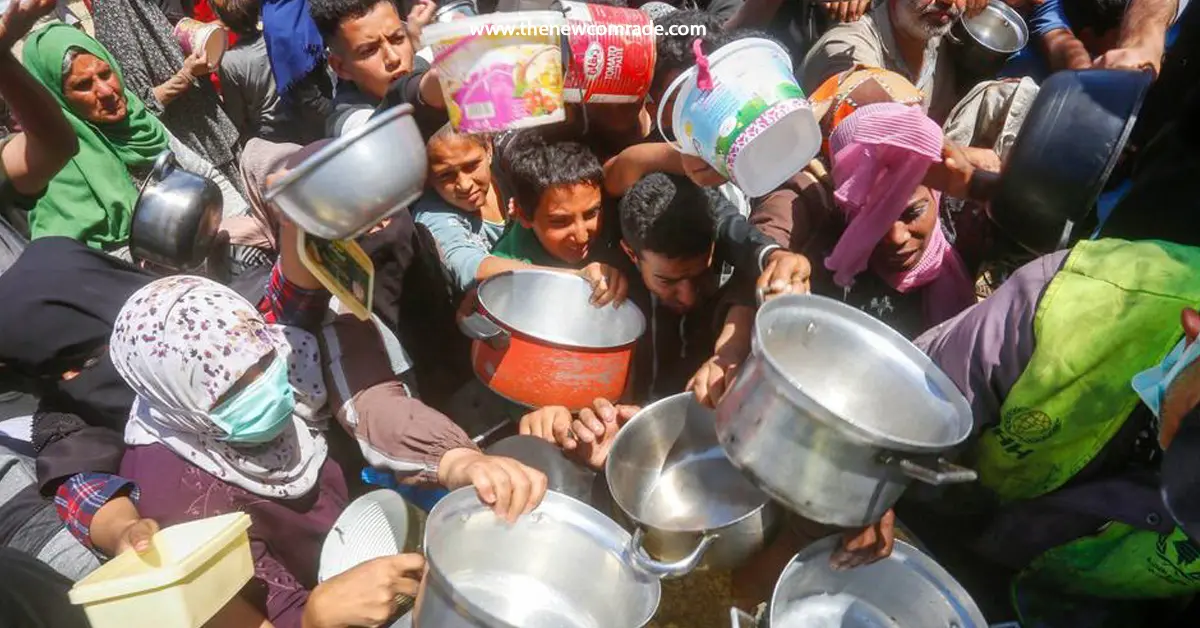Looking at the genealogy of Communist parties in the Indian state, one could trace them to Brahminical revivalist movements of the British era in Bengal and Maratha – technically shaped as Brahmo Samaj and Arya Samaj respectively. It was this movement, which was utilised effectively as the primary tool of anti-Muslim propaganda, eventually developing to the perpetual social and political divisions and, based on the same, 1947 tragedies. It was the literature of Bengali Brahmins that served as the initial vehicle for this movement. Generally, Bengal leads India in its thinking, by the virtue of being the first laboratory for British ploys. Educated and trained by the British, Bengali Brahmins were implanted to a position of ideological hegemony in British India. Relatively, Maratha Brahmins did not enjoy this degree of privilege by the British. Bengali Brahmins, alongwith Kayasthas and Baidyas – collectively called the Bhadralok – got entrenched in political power. Kayasthas, like Menons in Kerala, fundamentally were a Shudra sub-caste. They were very capable administrators. Just prior to 1947 partition, Indian Class 1 officers consisted of only 3 % Brahmins and 70 % Kayasthas. After ten years of Jawahar Lal Nehru’s reign, Brahmins became 70 %. Nehru was a foxy Brahmin. Empowered by the absolute power attained by the 1947 partition, Nehru effectively camouflaged Brahminism by the term of “socialism” and softly established the absolute political domination of Brahmins, with almost no hurdles.
The fascist Brahminical militia called Rashtriya Swayamsevak Sangh (‘National Volunteer Corps’ ; RSS) was founded in 1925. Interestingly, Communist party of India (CPI) was formed in the same year. Different sets of Bengali Brahmins and Marathi Brahmins led both of these. Prior to this, Bengali Brahmins and Marathi Brahmins, together, had founded a group called Anushilan Samiti. Founding leaders of RSS as well as CPI, viz., KB Hedgewar and MN Roy were both part of it. Most of the founding leaders of CPI were drawn from that group. Anushilan Samiti was an underground group, using violent methods. Untouchables began to organise under the leadership of BR Ambedkar in 1920s. Brahmins, then, sensed their weaning hold over the demographic majority (‘bahujan’). RSS formation was done to check this current.
What becomes clear of these synchronous incidents is that CPI was preemptively formed to contain the natural reactions of victims of RSS. For this purpose, they travelled to the Soviet Union to study communist model. It was a pre-emptive attempt to abort any attempt by the untouchables of India to take up a socialist or communist movement, which would have shaken the very foundation of Brahminism.
Communist Party of India was formally founded in October 1920 in Tashkent, after the second Congress of Communist International in August 1920. Its seven founding members contained two Bengali Brahmins – MN Roy and Abaninath Mukherjee and, respectively, their wives Evelyn Trent (American) and Rosa Fitingov (Russian), a Tamilian Brahmin – MP Bhayankara Tirumal Acharya, two Muslims – Mohammed Shafique Siddiqui and Mohammed Ali (Ahmed Hasan) who were deputed by the Kabul-based Provisional Government of India of Obaidullah Sindhi. As Brahmins were generally elites out of touch with masses, they took Muslim figures with them to popularise their venture – a feat that was not reasonably within their capacity due to their elitism & exclusivism. Most notably, he created a military/party school in Tashkent with Muslim Indian exiles. In order to attract Muslims ideologically to CPI, MN Roy authored a work titled The Historical role of Islam – which was a work that dealt with the subject with a large degree of fairness, in contrast to the general Brahminic discourse from the advent of Fort William College. As such, though honesty is generally not considered a characteristic of Brahminic articulation, it was an instance which showed that they would even state truth if it served their interests.
Subsequently, untouchables and OBCs were drawn into CPI. This is their classical sequence, whereby they were particular that revolutionary leadership should not go to Muslims and this was aborted using oppressed castes. Leadership by those who crave for change is bound to disturb Brahminical hegemony.
Progressively, Brahmins initiated the violent ‘Naxal’ movements, with the objective of softly eliminating a cream of oppressed caste and tribal figures who had risen up intellectually and educationally. Government machinery utilised the opportunity with an iron fist. True to their objectives, Brahminical ‘communist’ leaders fully supported government machinery in the elimination of tens of thousands of bahujans – many of those who were the intellectual cream of those sections of society.
Not a single Brahmin or Baniya leader was killed in the spate of suppression of ‘Maoist’ movement, despite their constituting majority of its leadership. Land, wealth and power remain concentrated in the hands of Baniyas and Brahmins; yet they remain spared by Naxalites! In Kerala, there was a different course of events, whereby Naxal movement began at the hands of OBCs, like A Vasu. They were genuine in their objectives and did work to eliminate some landlords who belonged to the hegemonic castes. After some 3 ~ 4 such people were killed, a team of Nairs stormed into the movement and changed its policy – K Venu, Kannampally Murali, etc., for instance. In a short span of time, OBCs, including A Vasu, were out of that movement and rendered voiceless.
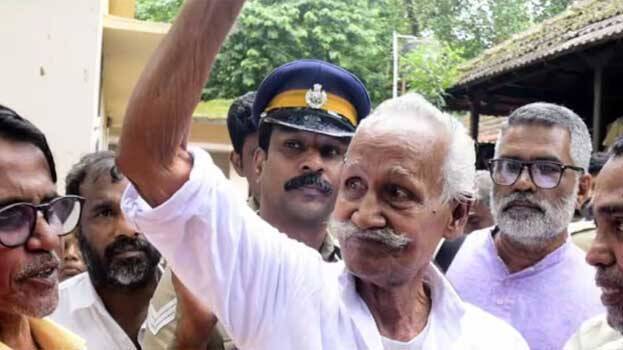
Caste is the basic factor at play in those parties and movements. It has a familiar modus operandi – viz. initiate a leadership of hegemonic castes, neutralise the revolting forces, contain their response to the control of hegemonic castes. That was the way of Communist movements in India.
West Bengal – case study
During my journeys across the states of India, with the support of Kanshi Ram, I could witness the living conditions of Dalits and Muslims first hand in different places. I found that it was in West Bengal, where there was a communist party government for decades, that Muslims and Dalits happened to be in the most pathetic socio-economic conditions. Even the core heartlands of Brahminical hegemony, like UP and Bihar happened to be better for them! By means of bureaucracy , media, educational infrastructure and party apparatus they fed on the blood of Dalits and Muslims and rendered them wasted. Muslims and Dalits areas were provided vernacular education, while in stark contrast, those of hegemonic castes were provided education in English medium. Vernacular curriculum was replete with Brahminical content and highly reactionary in nature, designed to effectively brainwash them and place them at the perpetual disposal of the hegemonic castes. In Bengal, paved roads used to end where Dalit or Muslim habitations began. It would be travesty to call the ways in those places as roads. Schools and Hospitals were quite rare in those areas – condition of those which did exist was highly pathetic. Potable water was out of reach of Dalits and Muslims there. They were made to exist on the most polluted sources of water. They were made to depend on common ponds for everything – from the needs of domestic animals to household chores to pisciculture to drinking needs! Fishes grown in those ponds were hardly chewable! It was only quite recently that limited numbers of Muslims and Dalits began to get access to English medium schools and become capable of seeking opportunities outside their limited confines.
The effective camouflage and sophisticated vocabulary of the communist parties make them more efficient in executing the most extreme Brahminical agendas, than RSS.
Once while travelling with Kanshi Ram, he told me something quite insightful regarding Kerala and West Bengal – that wherever ‘communist’ parties held sway, political empowerment of Dalits and Muslims remained impossible. Finishing off this movement was imperative for the political and economic salvation of Dalits and Muslims.
In Kerala, Dalits, Muslims and OBCs remain deeply enslaved by the communist parties, being ‘kamikaze’ for their interests in various fields. They fail even to comprehend that they have been brainwashed into the Brahminical hegemony.This mindset is omnipresent amongst Malayalis. This is Hindu mindset concentrated – neither progressive nor left.
Making sense of changes within Communist parties
Every political party with Brahminical leadership only adopts permanent strategic interests – not any permanent labels, slogans or programmes. They would twist and turn tactically to serve their interests. It would be a futile exercise to correlate them with any ideology or assume them of carrying any ideological baggage. That has been their past, and so is their present – they would assess situations and adopt the most profiting stances, with no positive values, morals or perennial agendas.
Various political labels and parties, under Brahminical leadership, carry the same content.
The functioning of communist parties takes two routes. One is discussion of issues in their party congress and logical declarations. This serves the purpose of officialdom, with no reflection of it onto their political practice. Second is where they do whatever it takes – with or without declaring it – to serve Brahminical interests, in their political practice.
This could be understood upon examining party resolutions taken in different party congresses, which would look revolutionary, but remain only in papers.
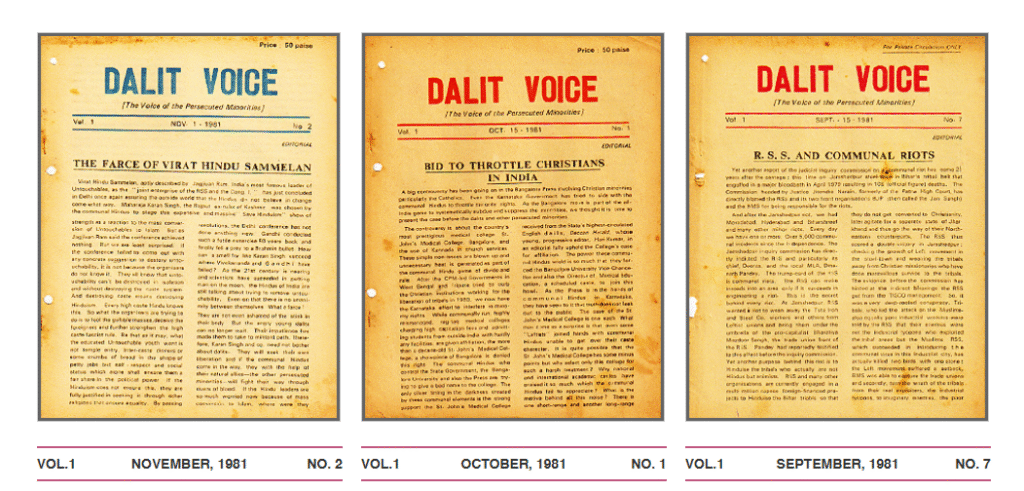
Once I had written in Dalit Voice magazine, regarding a scene that reflected this dichotomy – in the 13th Party Congress of CPI-M held in Trivandrum in December 1988 on one hand was quite revolutionary-looking resolutions and on the other was a huge portrait welcoming delegates for the congress, outside the railway station, which portrayed EMS Namboodiripad as the Brahmin deity Krishna seated in his legendary chariot and Das Kapital as Bhagvad Gita (a famous poetry part of the mythology ‘Mahabharat’ connected with Krishna) – a complete Brahminic symbolism and connotation. One needs to bear in mind that the time was that of Babri masjid demolition fervour by the RSS, throughout India, as well as the aftermath of the venomous campaign against Muslim Personal law against the backdrop of Shah Bano case – even to the point of then pushing out alliance with Muslim League.
All party mechanisms and functions, then, reflected a clear Hindu character. Vis-a-vis issues outside India, the same CPI-M would pose stances aimed to impress Muslim masses of Kerala.
In few basic issues, one could witness the identicality of attitudes of communist parties, Congress and BJP, towards Dalits, OBCs and Muslims. First of these is regarding sharing power with these communities be it within their respective parties or with political powers of those communities. Second is their attitude towards community and caste reservations. Using differing terminologies, these parties share similar stances. Recently we witnessed the stands taken in the parliament by the communist parties, on the subject of hegemonic castes’ reservation. Even before RSS uttered about such a thing, EMS strongly presented the case for economic reservation, over social reservation. After assuming power as Chief Minister of Kerala, EMS first signed an order for constituting an Administrative Reforms Commission in 1957. He remarked that reservation had very seriously affected the efficiency of governance. That nine-member committee was, barring Joseph Mundassery – a Syro Christian (also higher caste), drawn from Brahmins and Menons. Its full-time secretary was Harsh Deo Malaviya, a Brahmin Congressite from Allahabad. He had come with ‘holy water’ of Ganges with him. When reporters enquired about the same he said that it was to ‘purify’ the various ‘unclean’ (ashuddha) things.

The nine-member Committee for Administrative Reforms reported that reservation ought to be done based on economic status. EMS is the one who first brought the ‘creamy layer’ proposition in the matter of caste and community reservations. Tragically, this report of ARC was quoted in many later-day judicial judgments.
Few words about EMS
His rise through the leadership of Congress and then the CPI and, after split, CPI-M, and parallely the Head of state government, followed a certain trajectory worth mentioning here. In the Punnapra-Vayalar uprising, Dalits were instigated to revolt against the British-trained security forces and armed forces of Travancore. They were trained to use ‘vaarikkuntham’ only. It was certain that they would be shot at. Around 3000 Dalits and a handful of OBCs (Ezhava) were brutally killed. Not a single hegemonic caste person was harmed. Despite their exhortations, they physically maintained distance from their actions. EMS was, at the time, attending a three-day Brahmin Sabha camp at Malappuram. After 11 years CPI rode to electoral victory cashing on this uprising and EMS became Chief Minister. He hailed from one of the richest Brahmin landlord families of the region, to whom the British had gifted a unique clock shaped as a Shivlinga in appreciation of the high amounts of land tax paid by them. After his rise to power, no enquiry was conducted regarding this uprising, no data and details of victims and their families were collected and no compensation was awarded. As such, a rightful opportunity for Dalits, by the virtue of the uprising on which the victory was realised, was usurped. Their representation in the cabinet was limited to one or two members. Brahmins, Menons and Syro Christians decorated all key Ministerial positions. Until VS Achuthanandan became the Chief Minister, buckling under public pressure, only Nairs and Brahmins were given the position in Kerala.
Five people – 3 Nairs and 2 Brahmins – founded the party unit in Kerala. They were EMS, SV Ghate (a Marathi Brahmin), P Krishna Pillai, NC Sekhar and K Damodaran. NC Sekhar was relatively more honest of the bunch. He had married from amongst the OBCs.

When a situation arose and a promise was made during an election campaign that an OBC, viz. KR Gouri Amma, would be made Chief Minister, a Nair, viz. EK Nayanar, was brought instead, to the position. At a certain juncture when caste consciousness amongst the public arose, party members were selected to work in their respective communities, like Dalits and OBCs, to bring those communities to the fold of party. P Gangadhar was assigned to work amongst OBCs. A Cochinite and an OBC himself, he married a Dalit lady and worked selflessly for the party. At a SNDP meeting he remarked: “ The problem of our country is the dominance of Brahminism. So long as this exists, no changes could happen. To destroy the dominance of Brahminism, SCs, STs, Nairs and OBCs should move forward unitedly.” This speech got reported in the media. After a week he was served a show-cause notice from CPI-M secretary EK Nayanar.EMS could not tactically hand it directly to him, as he was a Brahmin. The notice said: ‘You have not shown regret or asked forgiveness over the statement afterwards. So…’ He had published the correspondence between him and the party in a book titled Brahminadhipathyam (Brahminic dominance). Interestingly, the book was not published after the first issue. He was expelled from the party. Thereafter, he founded a political party called Socialist Revolutionary Party (SRP) dominated by the OBCs.
A main agenda of Indian politics ought to be establishing proportional political representation for SCs, STs and minorities . Bahujans have had no political representation since the inception of the Indian state. Mainstream political parties are united in degrading them and violating their civil rights.
In CPI-M, it was only recently that a namesake Dalit was given a position in the Politburo. Interestingly he was a medical doctor and not one representing the working class for a party that claims to represent them. In contrast, an elite Nair of Palghat, viz. Prakash Karat and his wife, were members of politburo for many years just because they were in the leadership of their student wing -SFI – in the prestigious JawaharLal Nehru University (JNU). They had no mass following.
Similarly, KR Gouri Amma was selected even to the state committee only at her last term. She was active in the CPI and CPI-M since her teenage days and faced severe atrocities many times. She became a legal expert and proved herself as an efficient political administrator. In the realm of governance there was hardly anybody in CPI-M those days to challenge her capabilities. She could not be mislead down by the tactics of bureaucrats. She had her own rational approach. Until she was convinced not a single file moved forward. If she had become Chief Minister of Kerala, it was likely that a lot of basic things would have been done. EMS played many dirty games to abort this.
The role of EMS with communist parties was akin to Adi Sankara who had finished and sidelined Buddhism in South Asia.
In the history of communist parties in Kerala, West Bengal and Tripura, power was always in the hands of hegemonic castes.
Rise of VS Achuthanandan, was an exceptional case and his appointment as Chief Minister was made under compulsion. Pinarayi Vijayan attained leadership by the route of muscle power. As he realised the style and mindset of CPI-M he used the tactics of violent mafias.
In Kerala anti-Muslim politics was pierced through the bodypolitic by EMS and CPI-M. He considered Muslims as extremely uncivilised and outdated, requiring ‘salvation’ and ‘reformation’. He considered ‘saving’ Muslims as his mission. The damage caused by his work still keeps snowballing and the undercurrents created by it were extremely intense. Though EMS supported Malappuram district formation, under pressure from his erstwhile alliance with Muslim League, he had a farsighted, crooked motives behind it.
EMS was the one who advanced the objectives of RSS in Kerala the most, though his language used was different from theirs.
(To be continued)
Prabhakaran Varaprath is a veteran Dalit-Bahujan activist and writer from Kerala whose life has been marked by a relentless struggle against caste supremacy (Savarna dominance). A close associate of the legendary Bahujan leader Kanshi Ram, Prabhakaran worked extensively across India documenting the conditions of Dalits and marginalized communities. Born into a Communist family, Prabhakaran is the nephew of AK Gopalan, the supreme leader of the Communist Party of India (CPI) in post-1947 India, and was raised in Gopalan’s household.
In 2003, Prabhakaran formally converted to Islam, taking the name Shamsudheen, as part of his commitment to propagating Ambedkarite ideas and continuing his fight against caste hierarchy. He also authored a book titled ‘Ambedkarite Muslim.’ He also served as editor of Dalit Voice Magazine.
As a writer and intellectual, Prabhakaran continues his ideological battle against Brahmanical hegemony, offering critical perspectives on Indian politics, communism, and social movements from his unique position as an Ambedkarite Muslim activist. This article has arranged by our sub-editor Sidheek CS.
Disclaimer: The opinions expressed in this article are solely the author’s and do not neccessarily reflect the opinions or beliefs of the website and its affiliates.
